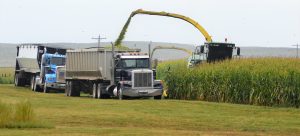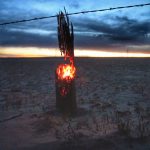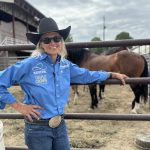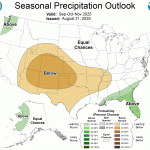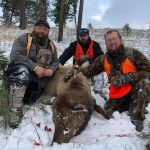Wet, cool conditions affect corn crop in Colorado, Kansas, Nebraska
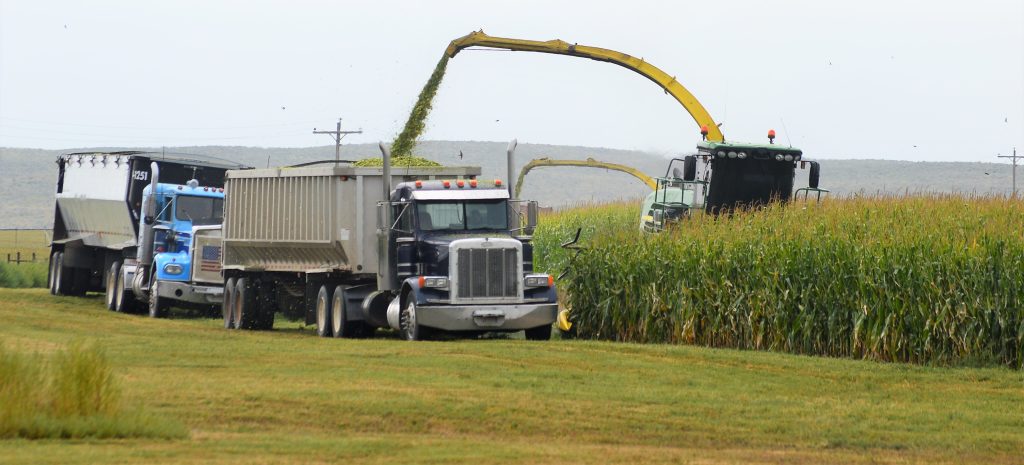
Corn-RFP-090825
An unusually wet, cool summer has been a mixed blessing for corn growers in Colorado, Kansas and Nebraska. While the rain was welcome early on, things need to dry out and warm up to finish the crop.
Kelly Brunkhorst, executive director of the Nebraska Corn Board, said that while the wet summer across the Midwest eased drought conditions across most of the state, it brought with it increased disease pressure.
“The eastern part of the state’s been dealing with tar spot a little bit, and it continues to move west and a little bit north,” Brunkhorst said. “But southern rust, I continue to hear, is moving clear across the state as we’ve seen in these late rains.”
A lack of sunshine and higher humidity, especially over the past 45 days, poses a threat to the crop’s “standability,” making the corn vulnerable to high winds as it ripens. Brunkhorst said he’s hearing about “tip back,” where the kernels on the tips of the ears don’t develop, and that’s going to impact yield. The USDA’s National Agricultural Statistical Service has forecast corn yield in Nebraska at 192 bushels per acre, but Brunkhorst said, while that may have been accurate a month ago, yield will be somewhat lower.
“I think we’re probably off of the top end of the yield, where USDA has us at currently, or we’re two bushels below where the record was back in 2021 and 2022,” he said. “We might still meet the record in production just because of our increased planted acres, but I think yield, the number that USDA has for us is what I hear at a top end at this point, and probably we’re going to be below that as we continue to move forward through harvest.”
Weather probably will delay harvest by one or two weeks in the Cornhusker state. Typically, Brunkhorst said, seed corn harvest would be well under way by now, but it’s just getting started. Silage and wet corn harvest also have been delayed.
“We’re not seeing a lot of wet corn being taken out,” he said. “We’re starting to see some silage being cut now. So I would say we are behind by a week or two. We need some warmer weather just to continue to finish this crop out.”
KANSAS CROP
Similar conditions are found in Kansas, where the U.S. Department of Agriculture is projecting a record 139 bushels per acre, up a whopping 7.8 percent over last year, producers face the challenge of getting it out of the field.
Kaitlin Donovan, communications manager for the Kansas Corn Commission, said rain and moderate temperatures are leaving fields wet and have farmers worried about getting harvest going before things like stalk rot take effect.
“To maintain quality during storage, the corn needs to be at 17 percent moisture or lower and warmer, dry weather will help achieve that sooner,” Donovan said. “Throughout the growing season Kansas Corn has been working with Kansas State University’s Plant Pathology lab to track corn stunt, tar spot and southern rust across the state.”
Donovan said Kansas farmers can get the latest information on corn disease at the commission’s website, kscorn.com/corndisease.
The crop is expected to meet yield and production projections — providing it can be finished out and harvested in a timely manner — and corn and ethanol exports are setting records, Donovan said, but depressed market prices will cut into profits.
“Two factors weighing on the Kansas market are decreased feedlot placements due to a shrinking cow herd and China trade issues negatively impacting grain sorghum exports, which has a spillover effect on corn basis,” she said.
COLORADO CORN
In Colorado, the biggest concern is hail from the violent thunderstorms that form along the foothills of the Rocky Mountains and roll eastward. Nicholas Colglazier, executive director of Colorado Corn Council, said this year’s dryland corn crop could be the best of the last 10 years, with the overall crop in good shape.
“The responses I have received have it looking like a pretty good crop as it was able to dodge some of the severe hail storms we had this summer,” Colglazier said. “Overall the non-hailed irrigated corn is looking pretty good this year while the dryland is still hit or miss due to rain patterns with some that missed the rains in rough shape. But some are saying that it will be the best dryland crop in five or 10 years.”
Colglazier said he agrees with the USDA’s yield projection of 118 bushels per acre, which is a 1.7 percent increase over 2024.
Colorado is estimated to have 1.5 million acres of corn planted in 2025, according to the USDA’S National Agriculture Statistics Service State Agriculture Overview. Nebraska farmers planted a record 10.3 million acres of corn, a 2 percent increase from the previous year. Kansas has planted an estimated 6.4 million acres, an increase of 100,000 acres from 2024.
Nationwide, average corn yield is forecast at a record high 188.8 bushels per acre, up 9.5 bushels from last year. NASS also forecasts record high yields in Idaho, Illinois, Indiana, Iowa, Minnesota, Missouri, South Carolina, South Dakota, Tennessee, Virginia and Wisconsin. As of Aug. 3, 73 percent of this year’s corn crop was reported in good or excellent condition, 6 percentage points above the same time last year.

